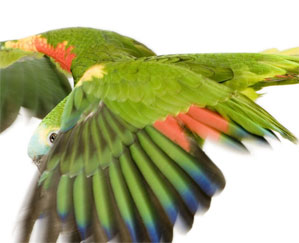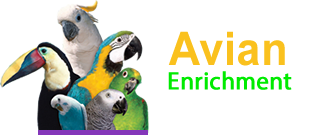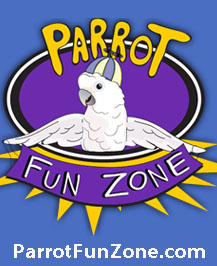 Clipping is recommended primarily for safety reasons, as it helps to prevent many types of accidents. Clipping is also promoted as a means to assist in taming and training a bird. Birds can find very creative ways to get in trouble in our homes and clipping is definitely recommended for any bird allowed to play freely outside their cage. Many birds have met their end by drowning in toilets, breaking their necks by hitting windows or mirrors, flying into ceiling fans or escaping out an open window or door.
Clipping is recommended primarily for safety reasons, as it helps to prevent many types of accidents. Clipping is also promoted as a means to assist in taming and training a bird. Birds can find very creative ways to get in trouble in our homes and clipping is definitely recommended for any bird allowed to play freely outside their cage. Many birds have met their end by drowning in toilets, breaking their necks by hitting windows or mirrors, flying into ceiling fans or escaping out an open window or door.
It is recommended that baby birds should be allowed to fledge before their first clipping or they may never be able to learn to fly.
The objective of clipping your bird's wing feathers is to cut enough feathers to prevent lift and speed during flight but also, to leave enough to allow your bird to safely and gently glide to the floor.
Clipping is not painful, cruel or dangerous if done properly. Before attempting to clip your bird you must know:
- How to safely restrain your bird to prevent injury or suffocation. Proper restraint prevents harm to both the bird and the groomer.
- How to perform the procedure properly for your species of bird. Typically, lightweight bird species such as cockatoos or cockatiels will need to have more feathers trimmed than heavier bird species (greys, eclectus, macaws). Ask your vet for guidance.
- What to do in the event of an emergency.
If you are unsure how to safely restrain and clip your bird's feathers we recommend that you either seek out professional grooming or have your avian vet demonstrate the proper techniques. Improper clips can lead to damage of the chest and tail as the result of falling.
Clipping Procedure Overview
First of all, clipping is usually a two person job where one person safely restrains the bird while the second does the actual grooming. Be sure to perform this task in a well lighted room. The process can be very stressful to your bird so be prepared to work quickly and have all the necessary supplies on hand before you start.
- Assemble needed supplies - towel, scissors, clotting agent, tweezers.
- Gently wrap the bird in a towel and recline your bird onto its back being careful not to apply excessive pressure to his chest.
- Gently reach inside of the towel and extend the wing to expose the feathers.
- Examine the wing for the presence of blood feathers as noted by a dark blue colored shaft. Avoid cutting blood feathers. If a blood feather is cut be prepared to take appropriate first aid measures.
- Cut the number of feathers as recommended for your species. It is common to leave the 2-3 outer primary feathers intact for cosmetic reasons and to trim the next 5-6 feathers in a smooth line just below the coverts.
- Never cut the secondary feathers.
- Always point the sharp end of the scissors away from your birds body.
- Repeat the procedure for the second wing. Clipping only one wing creates an imbalance that may lead to injury.



















































































































































Comments powered by CComment